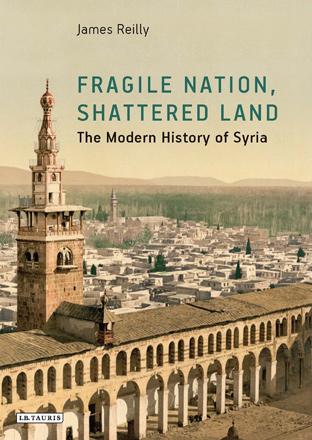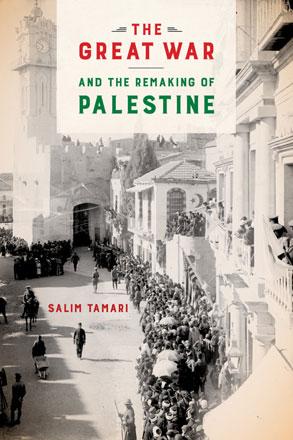You are here
500 years of Syrian history
By Sally Bland - May 12,2019 - Last updated at May 12,2019

Fragile Nation, Shattered Land: The Modern History of Syria
James A. Reilly
Boulder/London: Lynne Reinner Publishers, 2019, Pp. 258
In this book, James Reilly, professor of history at the University of Toronto, analyses the political, social and economic transformations that occurred in the territory that is modern-day Syria, with an eye for understanding how the country could have descended into civil war in 2011.
His account is far from dry as he sketches brief, but fascinating, portraits of the places and people that made history from the Ottoman era until the present. Making the narrative even more lively are the sections about cultural life in each time period, from the barber who chronicled life in Damascus’s Old City in late Ottoman times up to the well-known modern Syrian writers, poets and film-makers. There are also sections on early women’s organising.
During most of the Ottoman era, there was hardly a specifically Syrian national identity, and Reilly shows how closely events in Syria at this time were connected to developments in what is today Lebanon, Palestine, Jordan, Iraq and Egypt. By the late 19th century, however, Syrian intellectuals’ participation in the Nahda (Arab Awakening) laid the groundwork for Arab nationalist sentiments, while a “new literary genre of the historical novel introduced to the reading public a fresh way of thinking about the past… Arabic readers could imagine that they were heirs to a drama that stretched back to antiquity and celebrated the heroes of old”. (p. 77) One notable example was “Zenobia” (1871), written by Salim Bustani about the Roman-era queen of Palmyra.
Reilly traces the gradual development of a specifically Syrian national identity and identifies several tendencies that emerged in Ottoman times that have persisted until the present. One of these is urban-rural tension, whereby the rural population regarded the cities as “rapacious or exploitative. Urban-rural tensions and contestations would prove to be an enduring feature of Syria’s modern history”. (p. 24)
The gap between urban and rural areas has been named among the causes of the recent war, which seems doubly ironic considering that the initial Baath take-over was led by officers and politicians of rural background, and the first years of Baathist rule brought vast improvements in rural areas. According to Reilly: “Ambitious young people of rural and small-town origins saw opportunities that their parents could only have dreamed of.” (p. 140)
Another recurring feature in modern Syria’s history has been the emergence of local power centers. In some cases, this fostered an independent Syrian national identity, such as when Sultan Atrash unleashed resistance to French occupation by leading the initial revolt in Jabal Druze, which then spread to other areas and sectors of the population. In other cases, the existence of local power centres has led to fragmentation as events since 2011 have shown.
While Mohammad Ali’s foray into Syria resulted in the imposition of a modern state formation for nine years, it was the restoration of Ottoman rule and its institution building after the sectarian conflicts of 1860, that really changed things. “From this point onward, Syrian Arab elites would adapt to modern statehood rather than try to resist it.” (p. 64)
It was not always a smooth adaptation. The colonial division of the area after World War I separated Syria from its familiar context as the centre of Balad Al Shem, ended the assumed diversity of the Ottoman Empire and posed new challenges. “Syria’s long-standing ethnic, social and cultural diversity was an awkward fit for the new, post-World War I paradigm of political community embodied in the nation state… These efforts to construct a unified nation… were all the more daunting in the face of a French colonial administration whose practice was to emphasise and deepen Syria’s political and social differences.” (p. 112)
As a result, newly independent Syria was plagued by coups and shifting governments for over a quarter of a century until the rule of the Baath Party stabilised. The 1940s, the decade when Syria declared its independence, also witnessed the emergence of the League of National Action and the Islamic associations, forerunners of the Baath Party and the Muslim Brotherhood, respectively. As the author notes, this “anticipated Syria’s future political conflicts”. (p. 107)
Still, despite these challenges and having fewer resources than Egypt for example, Reilly asserts that “Syria would hold a prominent place in the development of a modern Arab cultural imagination” (p. 116), which of course makes the recent war even more tragic.
Reilly deals with many other questions and events. One comes away from the book with much valuable information, but also a sense of how complicated Syria’s history is. To help the reader keep the record straight, the book ends with a chronology (1516-2018), a Who’s Who of important people and a glossary of terms, in addition to the usual notes and index. If one wants to gain new insights into Syria in a highly readable form, this book is recommended.
Related Articles
The Alawis of Syria: War, Faith and Politics in the LevantEdited by Michael Kerr and Craig LarkinLondon: Hurst and Company, 2015Pp.
The Great War and the Remaking of PalestineSalim TamariUS: University of California Press, 2017Pp.
While 40 years of seldom-interrupted stability under Hafez and Bashar Assad’s rule may make today’s chaos appear as an anomaly


















